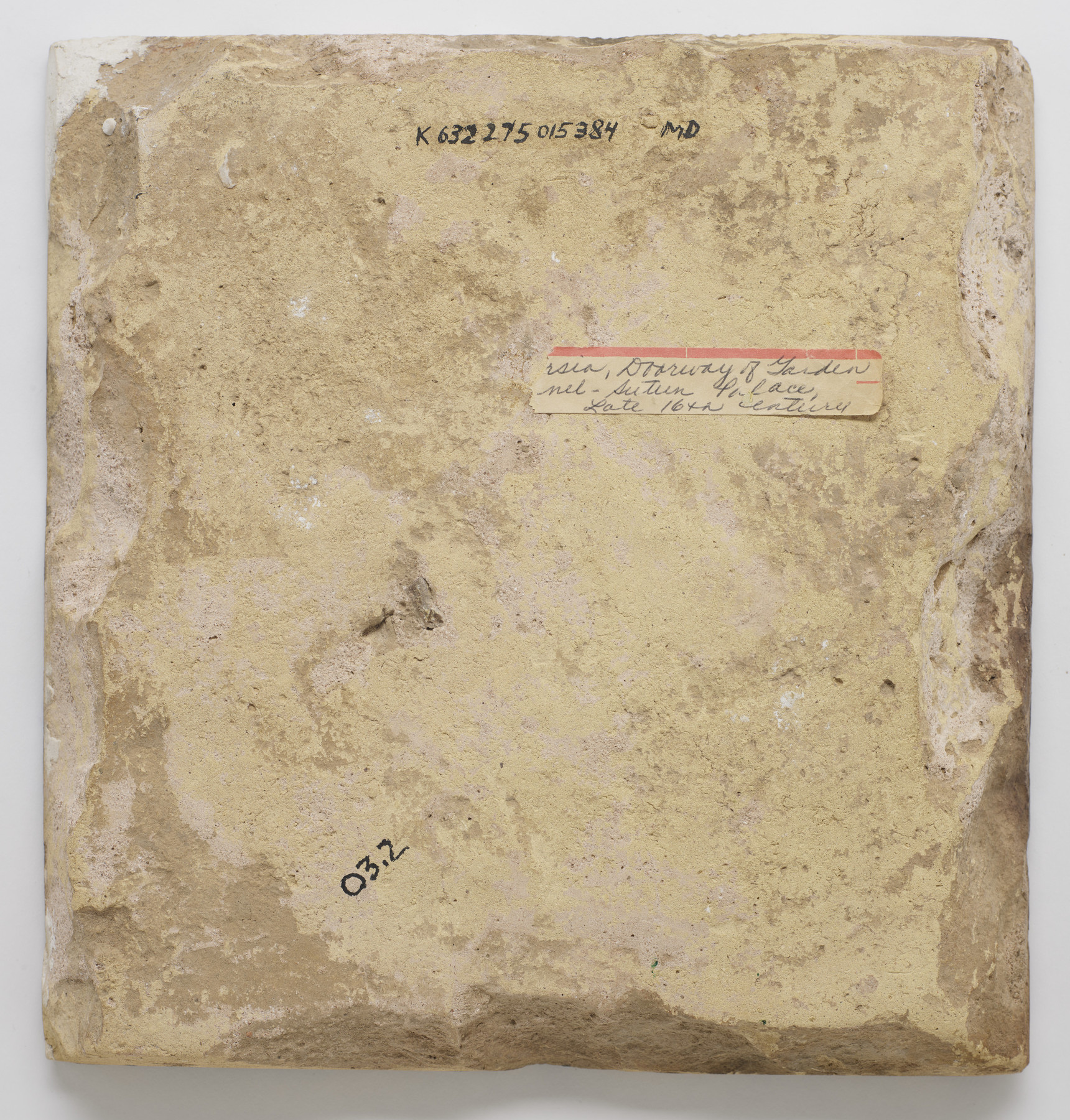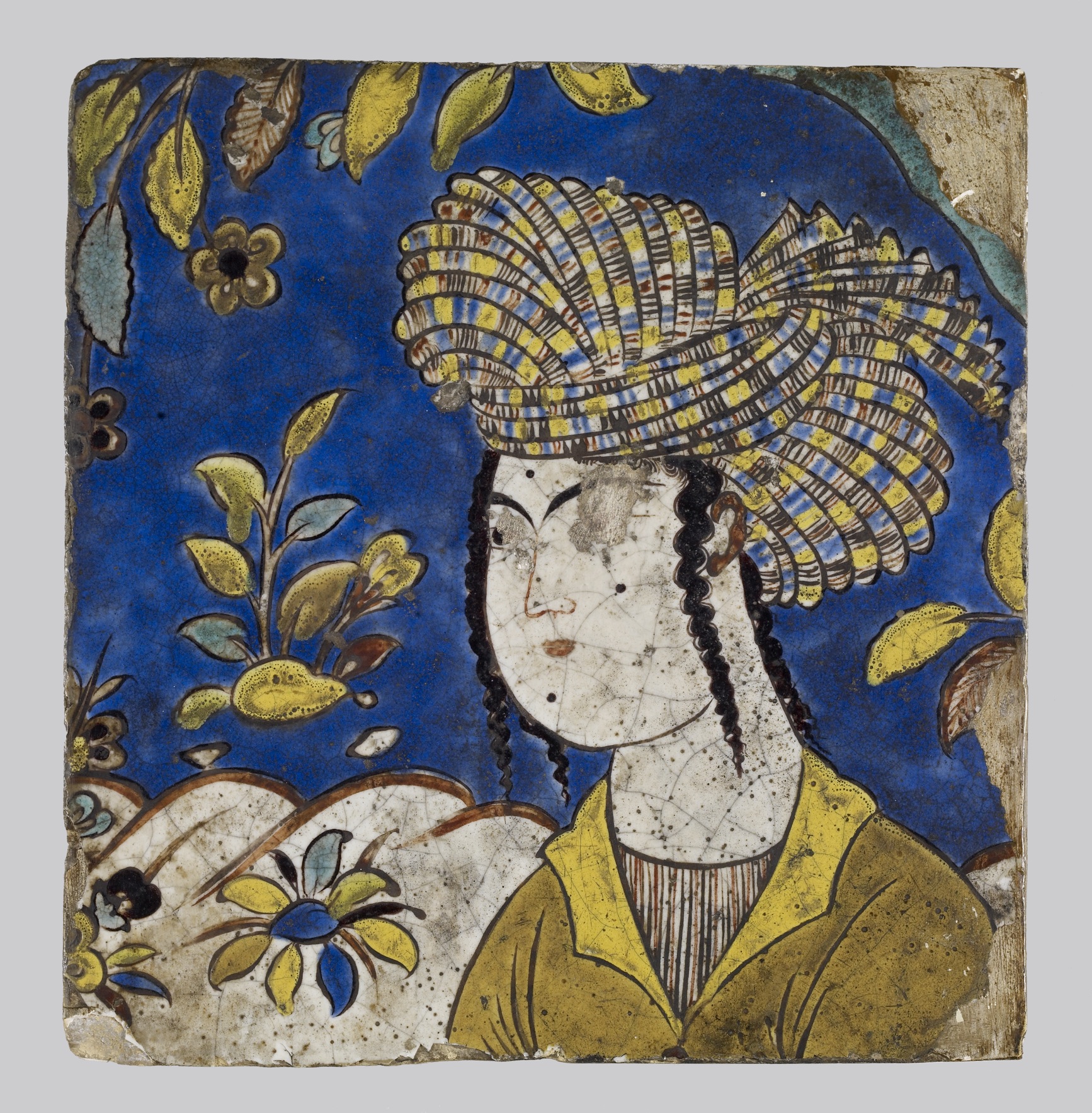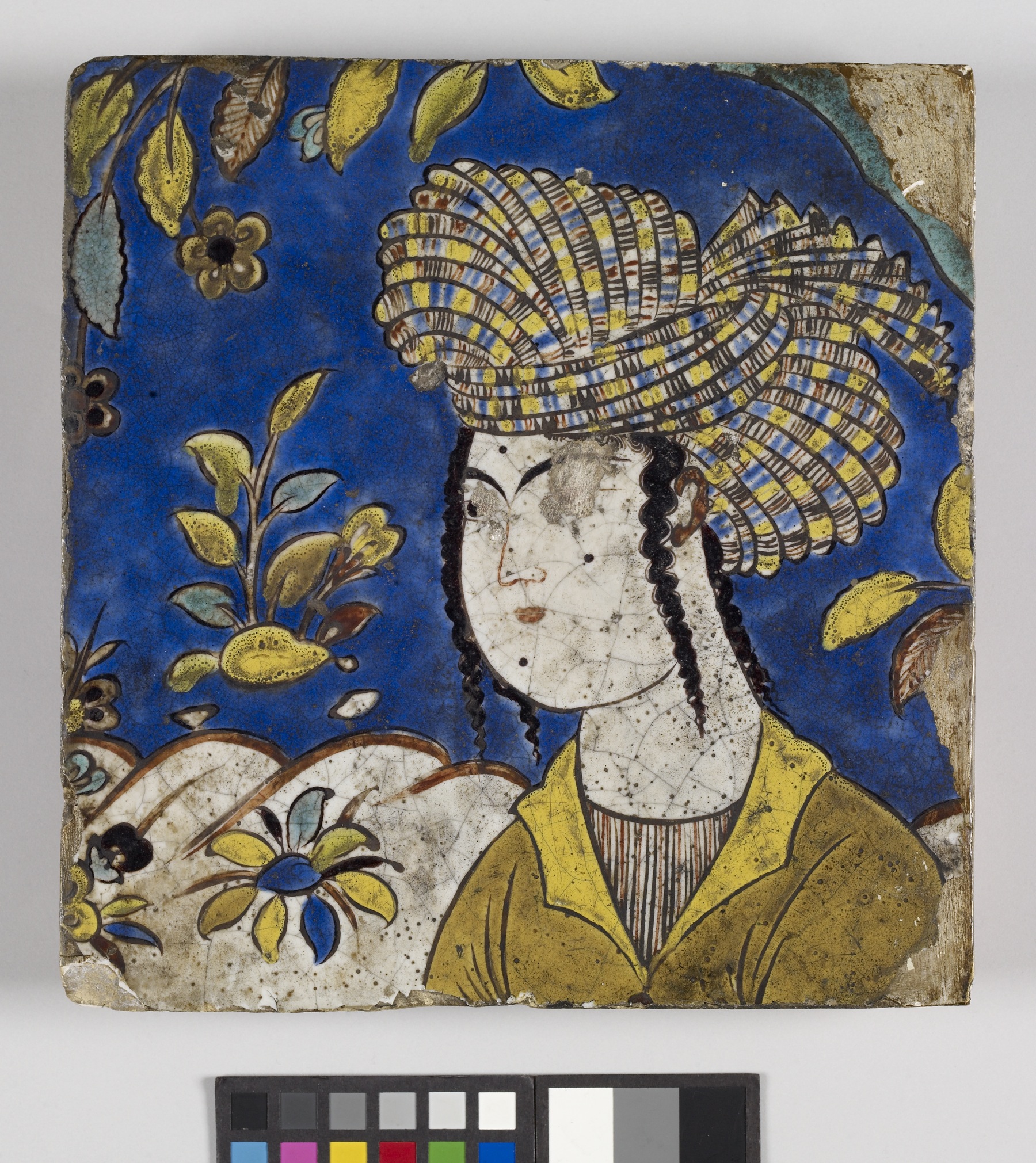Tile with Image of a Man
(Islamic World )
The tile of white ground and polychrome decoration is of composite or stone paste body with overglaze colors applied by cuerda seca (dry cord) technique.
This seventeenth-century tile was once part of a larger figural composition that decorated a building in early modern Iran, most likely in the Persian capital at Isfahan. The palette and cuerda seca technique of the tile exemplify ceramic manufacture of Safavid Persia (1501–1722), where the court and wealthy merchants commissioned palaces sheathed in such polychrome narrative tiles. A popular theme for architectural compositions was men and women feasting outdoors; it is likely that the present tile was part of such a compostion, which finds many parallels in seventeenth-century arts of the book. The Safavid period is appreciated as an epoch of great artistic and literary output, when images of youthful figures, like the one seen on this tile, would conjure poetic verses celebrating wine, poetry, and the beloved.
Provenance
Provenance (from the French provenir, 'to come from/forth') is the chronology of the ownership, custody, or location of a historical object. Learn more about provenance at the Walters.
Collection of Dr. George Krotkoff; by bequest to Walters Art Museum, 2014.
Conservation
| Date | Description | Narrative |
|---|---|---|
| 3/4/2014 | Examination | Examined for treatment and for accession |
| 7/30/2017 | Treatment | cleaned; filled; inpainted |
| 7/30/2017 | Treatment | Cleaned to remove dirt and grime; prior damages filled and inpainted to re-integrate loss. |
Geographies
Iran (Place of Origin)
Measurements
H: 9 5/8 × W: 9 1/16 × D: 1 5/16 in. (24.4 × 23 × 3.3 cm)
Credit Line
Bequest of Dr. George Krotkoff, 2014
Accession Number
In libraries, galleries, museums, and archives, an accession number is a unique identifier assigned to each object in the collection.
In libraries, galleries, museums, and archives, an accession number is a unique identifier assigned to each object in the collection.
48.2873
















